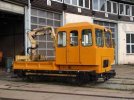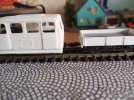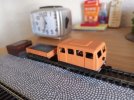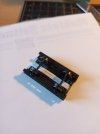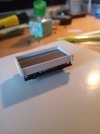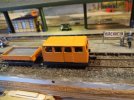The trams and the tram system's electric locos are a mixture of rebuilds, scratch-builds and Shapeways products. The idea for the TTm tram system came when a friend in Germany sold me a TTm 'Gotha' tram and 2 trailer cars made by
Karsei (a small German TT specialist). Sadly, though, the powered car ran very badly and was very noisy. The trams languished in a display case for quite a while until another German friend suggested I might like to rebuild the motor tram with a Japanese chassis -
Kato or
Tomix. He also suggested I should open an account as a buyer with a fantastic Japanese online retailer,
www.plazajapan.com - where I have since spent quite a lot of money!
Plaza Japan's prices are astonishingly low - around £10-12 for a
Kato or
Tomix chassis - and the postal charges , if you are happy with a long-ish wait, very modest. So my first move was to build a new chassis for the Gotha power car by employing an extended
Kato chassis. That worked so well that bought a couple of
Sommerfeldt pantographs and converted one of the unpowered trailers into a motor car - the bodyshells are identical. The second trailer will follow - eventually. The Japanese chassis have coreless motors and flywheels (for 12 quid!) and run beautifully. Then I discovered
Shapeways - now, sadly, defunct, and the work of Joachim Starke ('Engineer'). From
Shapeways I obtained bodyshells for a Dresden tram and two steeple cab TTm electric locos - and a bodyshell for a TT track maintenance vehicle - of which more later. The slightly larger of the two locos has a
Kato chassis with one motor-bogie, the smaller has 2 powered bogies, each with its own tiny traction motor. They came from an N scale kit from
Plaza Japan - and the kit has now disappeared from stock. Why did I not buy two? Having built the two electric locos I needed some goods or PW vehicles for them to pull - and made a very pleasing discovery. The German company
SES (now part of the
Auhagen group - I think), manufacturer of H0 and TT scale road vehicles, produced at one time a model of the E German truck, the W50, and it was possible to buy bulk bags of vehicle components including parts for the W50 for a few Euros. The low-sided body for the long wheelbase W50 is a perfect fit for the
Peco N scale freight wagon chassis (or brake van chassis, or
Grafar chassis...). In the case of the
Grafar chassis or the long wheelbase
Peco chassis I added a platform for the shunter to stand on!
The photos are fairly self-explanatory
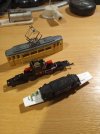
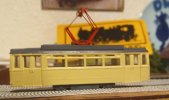
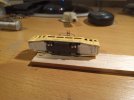
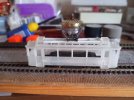
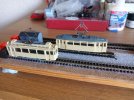
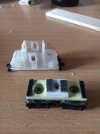
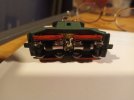
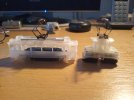
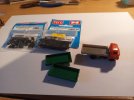
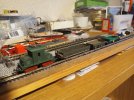
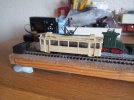
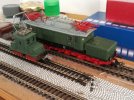

 I have a couple of Opels, a Ural Russian truck and an AEC Matador, no less, still unbuilt.
I have a couple of Opels, a Ural Russian truck and an AEC Matador, no less, still unbuilt.
 I have a couple of Opels, a Ural Russian truck and an AEC Matador, no less, still unbuilt.
I have a couple of Opels, a Ural Russian truck and an AEC Matador, no less, still unbuilt.
















